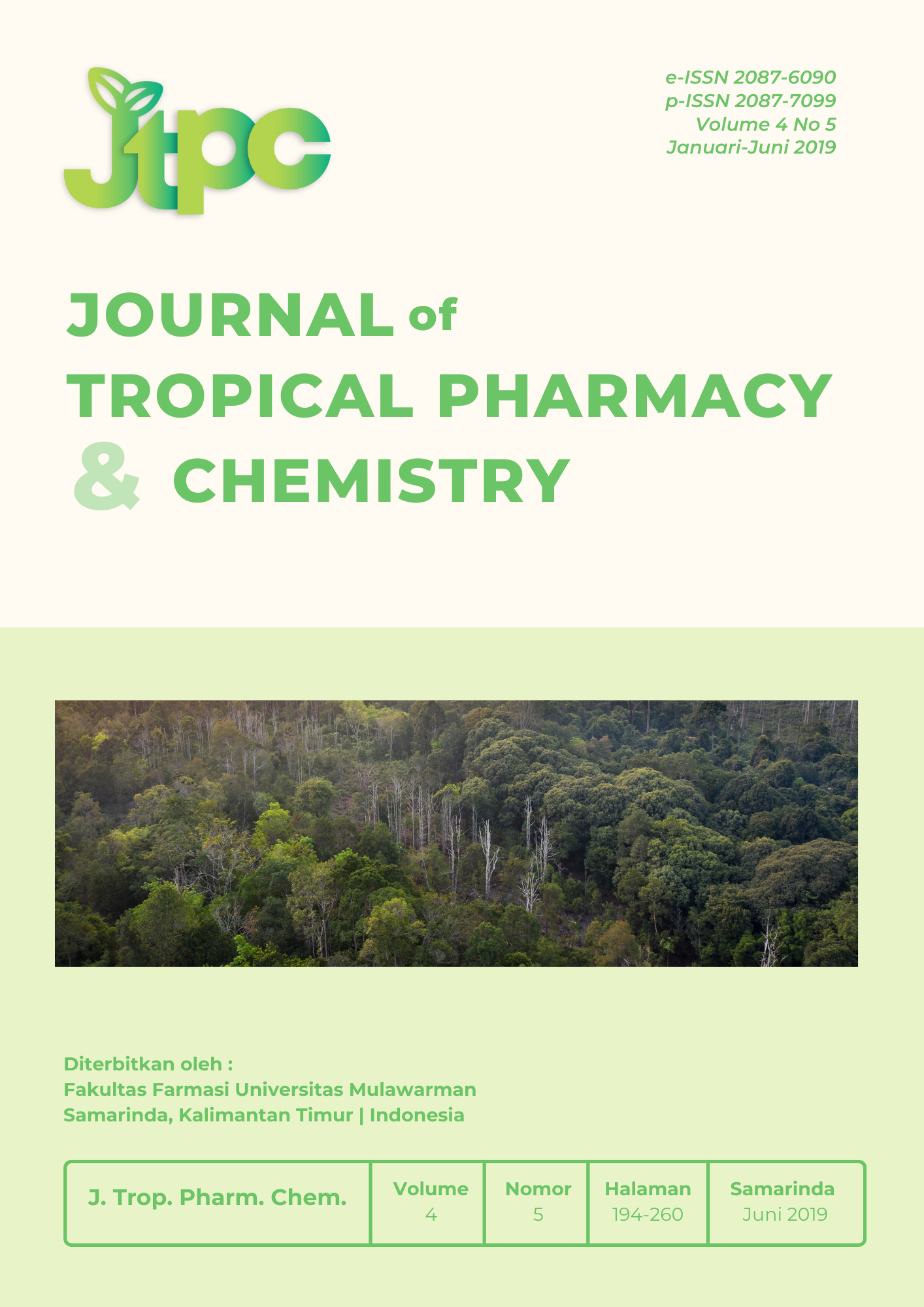Review of Chemical Characteristics of Antioxidant Compounds and Biological Activities that have the Potential for Pharmaceuticals
DOI:
https://doi.org/10.30872/j.trop.pharm.chem.v4i5.280Abstract
Chemical characteristics of a compound to be an antioxidant compound are more reactive than the compounds making up cells and tissues as well as metabolic component compounds, to radical compounds in the mammalian metabolic system. A highly reactive compound is (1) has one or more unpaired electrons in the form of radical electrons or compounds that lose or excess electrons form ionic (2) have many paired electrons (3) the distance between groups or atoms that have radical electrons very close or distance between same ion in a compound or the distance between groups or atoms which have electron pairs very close in term chemical bond or in space or conformation (4) and compounds that contain a lot of oxygen atoms. Therefore, a group of potential compounds that have strong antioxidant activity is phenolic, especially polyphenols because they have a hydroxy group or another group that has many paired electrons, located in an aromatic ring very close in chemical bonds, or an electron pair between aromatic rings in a very close compound based on space. Furthermore, highly reactive compounds are potentially toxic because they react easily with chemical compounds making up cells and tissues, as well as metabolic component compounds; such as proteins, lipids as fats, carbohydrates, non-fat lipid compounds, and nucleic acids (DNA and RNA). Therefore, the excess of antioxidant compounds in the metabolic system is not good, if there is no free radical in the metabolic system or excessive radical compounds. Thus, the biological activity of antioxidant compounds that must be known if an antioxidant compound will be used in the pharmaceutical field is toxicity. Toxicity information that prospects to be continued as a pharmaceutical antioxidant product is minimally sourced from preclinical testing.
Downloads
References
[1] Bjelakovic G. 2007. "Mortality in Randomized Trials of Antioxidant Supplements for Primary and Secondary Prevention. Systematic Review and Meta-Analysis". JAMA. 297.
[2] Breen, A.P. and J.A. Murphy. 1995. Reactions of Oxyl Radicals with DNA in Free Radical Biology and Medicine. 1033 – 1077.
[3] Clopton, D. A. and P. Saltman. 1995. Biochemical and Biophysical. Research Communication. 210: 189 – 1996.
[4] Elstner, E.F. 1991. “Mechanisms of Oxygen Activation in Different Campartmens of Plant Cell” in Active Oxygen/ Oxydative Stress and Plant Metabolism. American Society of Plant Physiologists. 13 – 25.
[5] Favier, A. E. 1982. Biological Indicators of Oxidative Stress in Humans. Trace Elements and Free Radicals in Oxidative Diseases. Champaign Illinois.
[6] Frankel, E. N. and W.E. Neff. 1983. Biochemistry and Biophysical. Acta. 754: 264 – 270
[7] Green, G.A. 2008. "Review: Antioxidant Supplements do not Reduce All-Cause Mortality in Primary or Secondary Prevention" . Evidence-Based Medicine;
[8] Halliwell, B and J.M.C. Guteridge, 1991. Free Radicals In Biology and Medicine. Oxford: Clarendom Press.
[9] Janssen, Y. M., B.van Houten, P. J. Borm, and B. T. Mossman. 1993. Cell and Tissue Responses to Oxidative Damage. In Laboratory Investigation. 69 (3): 261 – 274.
[10] Matteo V and E. Esposito. 2003. Biochemical and Therapeutic Effects of Antioxidants In The Treatment of Alzheimer's Disease, Parkinson's Disease, and Amyotrophic Lateral Sclerosis", Current Drug Targets. CNS and Neurological Disorders, 2 (2): 95–107
[11] Schuler, P (1990) Natural Antioxidant Exploited Commercial in BJ. 2005. Foods Antioxidants Husdont New York, Elsevier Applied Science.
[12] Sichel, G.C.C, M. Scalia, A.J. Dibilio and R. Bonomo. 1991. In Vitro Scavenger Activity of Some Flavanoids and Melanins Againts O2.- in Free Radical Biology and Medicine. 11: 1 – 8.
[13] Solomon, T.W. G., C.B. Fryhle, and S.A. Snyder. 1993. Organic Chemistry. John Willey, Singapore




